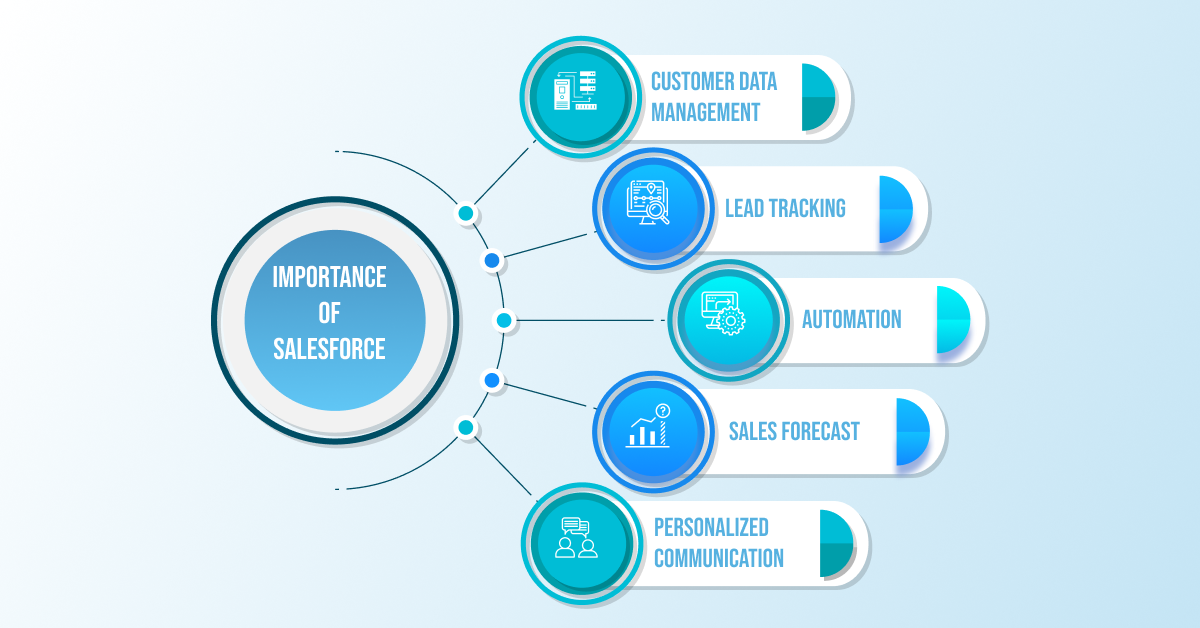Let us gain an understanding of Adobe Experience Manager (AEM)
Before comparing AEM 6.5, the most recent version of this Content Management System, and AEM Cloud, we need to understand what exactly AEM (Adobe Experience Manager) is and why we need to compare these two branches of the same tree.
AEM is a content management system (CMS) and a Data Asset Management (DAM) system that helps businesses or individuals in managing their web content on multiple platforms such as websites, mobile applications, and many others. AEM offers multiple features such as managing web content, managing digital assets, assisting in customer data analysis with the integration of its own Customer Data Platform (CDP), and many others. It’s a complete package if you want your content and digital assets to be managed effectively.
In 2019, AEM released its newest version, 6.5, with multiple new features as compared to its predecessor, AEM 6.,4, and everyone loved the new features added to it. But, after that, AEM has also released its AEM as a cloud service, and everyone has some questions in mind: that how is it different from AEM 6.5, which is still new and offering multiple new features?
To find the answers to these questions, here we are with this blog to compare both of these AEM services. It is also important to compare these as the release of AEM Cloud, adobe might be hinting for the End of Support (EOS) for AEM 6.5, which is still not announced yet. But as per the latest information from Adobe, AE< 6.5 will be receiving the updates in the future as well, but till when, it is still not known. If it happens, then the best possible option in front of the users will be the AEM cloud, so it is important to compare these two in terms of the features so that if AEM 6.5 goes down, the users should know whether AEM cloud is suitable for them or not.
AEM 6.5 vs AEM Cloud
| AEM 6.5 Overview | AEM Cloud Overview | |
| Adobe Experience Manager (AEM) 6.5 is a comprehensive content management solution for building websites, mobile apps, and forms. AEM is part of the Adobe Experience Cloud suite, enabling businesses to deliver consistent and personalized experiences across various channels. Released in April 2019, AEM 6.5 builds on its predecessor, AEM 6.4, by maximizing productivity and enhancing user experience. It offers powerful content authoring capabilities, empowering marketers and content creators to manage content efficiently without needing extensive IT support. Key features of AEM 6.5 include improved content fragment models for developers, enhanced asset management with a more intuitive user interface, and streamlined workflows tailored to enterprise needs. With the inclusion of dynamic media, AEM 6.5 allows organizations to deliver media-rich experiences seamlessly. Furthermore, the system supports integration with other Adobe Experience Cloud components, facilitating a more connected ecosystem for personalizing customer journeys. One of the popular features of AEM 6.5 is the Sites interface, which provides an optimized experience for marketers and authors. It supports various templates and components, making it easier to create and manage multi-language websites. Additionally, AEM 6.5 introduced Headless CMS capabilities, allowing organizations to distribute content easily across multiple platforms and devices while integrating easily with third-party systems. Overall, AEM 6.5 positions itself as a robust, on-premise, or cloud-enabled solution tailored for organizations prioritizing content management and personalization strategies. | Adobe Experience Manager Cloud, often referred to as AEM as a Cloud Service, represents Adobe’s cloud-native offering of its renowned content management platform. Launched as part of Adobe’s wider move to cloud solutions, AEM Cloud builds upon the foundational capabilities of AEM while offering several enhancements focused on scalability, flexibility, and reduced operational overhead. Central to AEM Cloud is its ability to deliver content at lightning speed, aided by cloud-native technologies that optimize performance and responsiveness. Built on Adobe’s robust cloud infrastructure, AEM Cloud is designed to support business agility by enabling organizations to adapt to changing demands without the constraints inherent in traditional on-premise deployments. This includes simplified deployment mechanisms and automated scaling to manage vast amounts of traffic during peak times. AEM Cloud leverages microservices architecture to deliver modular components, meaning organizations can deploy updated functionalities without significant downtime or disruption. Its integration with Adobe Real-Time Customer Data Platform (CDP) and other Adobe Experience Cloud services strengthens marketing capabilities and serves as a cornerstone for creating data-driven, personalized experiences. Another standout feature of AEM Cloud is the enhanced security model, providing businesses with comprehensive compliance and security protocols tailored for cloud environments. Continuous updates and monitoring mean that users always access the latest features and security enhancements, enabling organizations to stay competitive in a rapidly evolving digital landscape. |
In Depth Comparison Based On Features
When evaluating AEM 6.5 and AEM Cloud, it’s essential to look at the various aspects that set these platforms apart. The following comparison highlights key features in terms of deployment, scalability, performance, user experience, integrations, and security.
Deployment
AEM 6.5:
AEM 6.5 can be deployed on-premise or via cloud hosting. While on-premise setups offer organizations control over their environment, they also necessitate significant IT resources for maintenance, updates, and security. Choosing on-premise deployments can limit scalability, as organizations may find it challenging to keep pace with growth, especially during peak traffic periods.
AEM Cloud:
On the other hand, AEM Cloud functions as a completely managed service, utilizing Adobe’s cloud infrastructure. Organizations no longer need to handle the operational challenges associated with conventional IT architecture. Deployments within AEM Cloud are naturally more adaptable, enabling businesses to effortlessly adjust resources based on their requirements.
Scalability
AEM 6.5:
Scalability in AEM 6.5 relies heavily on the organization’s infrastructure. While it supports clustering for load balancing and failover, scaling requires investment in additional hardware and ongoing IT involvement. This may present challenges during traffic spikes when immediate scalability is crucial.
AEM Cloud:
AEM Cloud offers inherent scalability benefits and is designed to handle traffic fluctuations efficiently. The microservices-based architecture allows for on-demand scaling, enabling businesses to expand their resources dynamically without downtime or significant manual intervention. This adaptability is critical for organizations with varying levels of demand.
Performance
AEM 6.5:
Performance in AEM 6.5 relies on the server configuration and underlying infrastructure. While optimization techniques can enhance performance, organizations are responsible for ongoing performance monitoring and tuning, which may extract resources away from core business activities.
AEM Cloud:
With AEM Cloud, Adobe optimizes performance automatically through content delivery networks (CDNs) and caching mechanisms integrated into the cloud infrastructure. This design enables faster content delivery across global regions, providing end users with a consistently high-quality experience in terms of speed and responsiveness.
User Experience
AEM 6.5:
AEM 6.5 focuses heavily on authoring and user interfaces to enhance content creation and management. Its design, along with strong AEM content fragment features and asset management, enables marketers and authors to work effectively. However, as some users might be using an outdated interface, the level of training and experience can differ significantly across teams.
AEM Cloud:
AEM Cloud enhances the user experience further by implementing modern design principles aimed at intuitive navigation and ease of use. Interactive features, analytics integration, and AI-powered insights make crafting personalized experiences more accessible. Additionally, the platform offers continuous improvements, ensuring users benefit from the latest innovations without needing to manage upgrades manually.
Integration
AEM 6.5:
AEM 6.5 enables extensive integrations, especially with other Adobe Experience Cloud offerings. Although its integration capabilities are strong, establishing and maintaining connections with third-party services can require dedicated IT effort. Additionally, updates in the integration layer might demand considerable modifications to the overall architecture.
AEM Cloud:
AEM Cloud provides improved integration features with Adobe’s ecosystem and third-party applications. Its modular microservices architecture ensures effortless connectivity with various APIs and legacy systems, maintaining flexibility and broadening marketers’ choices. Organizations can integrate data sources and analytics instantaneously, greatly enhancing their capacity to deliver tailored experiences.
Security
AEM 6.5:
Security in AEM 6.5 highlights the importance of self-management. Organizations are required to diligently implement and oversee security protocols, software updates, and vulnerability assessments to protect their environments. Although this approach offers control, it may also create security vulnerabilities due to potential oversights or limited resources.
AEM Cloud:
AEM Cloud enhances security by providing default, built-in compliance with industry standards and best practices. Adobe manages security audits and continuous monitoring, ensuring organizations feel confident that their data and customer information are protected. As updates roll out automatically, customers always have the latest security features without active intervention.
Cost of Ownership
AEM 6.5:
The expense framework for AEM 6.5 can be considerable, primarily due to initial licensing fees and recurring costs linked to infrastructure, maintenance, and staffing. Organizations must also account for the expenses of employing qualified professionals to oversee the platform and guarantee its effective functioning.
AEM Cloud:
AEM Cloud operates on a subscription basis, providing predictable expenses aligned with consumption. This model can lead to lower upfront costs and the ability to align budget resources more effectively. The reduction in IT overhead and operational responsibilities also contributes to a lower total cost of ownership over time.
Wrapping Up
The transition from AEM 6.5 to AEM Cloud represents a major change in Adobe’s strategy for content management solutions. While AEM 6.5 is still an excellent choice for organizations seeking an on-premise option, AEM Cloud transforms the way businesses interact with customers and handle digital content in rapidly changing environments. AEM 6.5 provides stability, familiarity, and control for organizations that prefer to manage their own infrastructure. However, it requires substantial IT resources and has limitations in scalability and flexibility, particularly during high-demand periods.
On the other hand, AEM Cloud introduces a modern, cloud-native architecture that excels in scalability, performance, and user experience. It simplifies operations, automates updates, and provides robust integration capabilities with a focus on delivering real-time experiences. Organizations adopting AEM Cloud can leverage the comprehensive Adobe Ecosystem for targeted marketing initiatives, ultimately optimizing customer engagement and experience delivery. As businesses navigate the complexities of digital transformation, moving towards cloud-enabled solutions like AEM Cloud can yield substantial advantages over traditional on-premise models. Companies looking to future-proof their content management strategies should consider the cloud options available, ensuring that they can keep pace with rapidly changing customer expectations and market dynamics. In doing so, they pave the way for more seamless, personalized, and engaging experiences that resonate with their audiences.
At Deftsoft, we specialize in Adobe Experience Manager development services, helping organizations seamlessly transition to and optimize their use of AEM, whether it’s version 6.5 or AEM Cloud. Our team of experienced AEM developers and consultants can provide the expertise and tailored solutions needed to harness the full potential of your AEM instance. Whether you’re looking to develop customized components, improve content management workflows, or integrate AEM with other business systems, Deftsoft is here to ensure your success.


